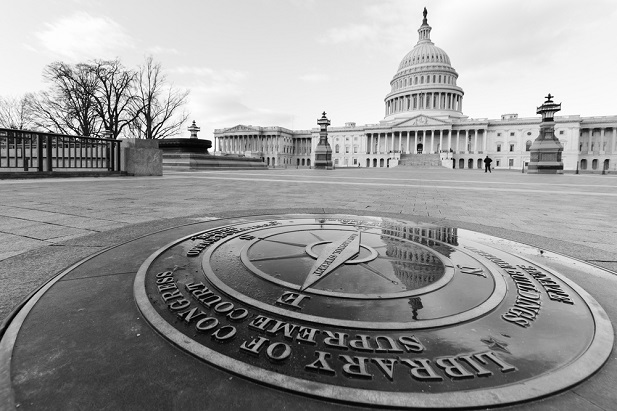 Employers with fewer than 100 workers would make the payrollcontributions into newly created Universal Personal, or UPAccounts, which would be overseen by the federal government.(Photo: Shutterstock)
Employers with fewer than 100 workers would make the payrollcontributions into newly created Universal Personal, or UPAccounts, which would be overseen by the federal government.(Photo: Shutterstock)
An influential voice has joined a growing chorus on Capitol Hillcalling for mandated sponsorship of retirement plansthroughout most of the private sector.
|Sen. Amy Klobuchar, D-MN, who is seeking the Democraticnomination for president in 2020, co-introduced legislation lastweek that would mandate sponsorship of retirement plans forbusinesses with more than 10 employees.
|The Saving for the Future Act, which has also been introduced inthe House of Representatives, mirrors a primary feature of TheAutomatic Retirement Plan Act of 2019, a bill sponsored by Ways andMeans Chairman Richard Neal, D-MA, that also mandates retirementplan sponsorship for businesses with more than 10 employees.
|But Klobuchar's bill goes further than Neal's by requiringemployers to contribute to plans.
|Under the Saving for the Future Act, employers that don'tsponsor a retirement plan would be required to contribute $0.50 forevery employee hour worked, or $1,000 a year based on a 40-hourwork week. Neal's bill, which may be considered by Ways and Meansas early as this summer, does not require sponsors to contribute toplans.
|Employer contributions would increase to $0.60 cents per hourworked after two years, and would subsequently be indexed to wageinflation.
|Employers with fewer than 100 workers would make the payrollcontributions into newly created Universal Personal, or UPAccounts, which would be overseen by the federal government.
|Workers would be automatically enrolled in the plans at a 4percent deferral rate, which automatically escalates to 10 percentover time. The bill includes an opt-out provision, and givesworkers the ability to adjust savings rates.
|The first $2,500 of savings would be diverted to UP-SavingsAccounts, which create an emergency cash fund from which workerscould draw.
|“The Saving for the Future Act will help close the wealth gap,prepare families in case of an emergency, and set workers up for asuccessful retirement,” Klobuchar said in a press statement. Thebill is co-sponsored by Sen. Chris Coons, D-DE, in the Senate.
|Employers with fewer than 100 workers would receive a tax creditworth 50 percent of the minimum contribution for the first 15workers, and another 25 percent credit for the contributions to thenext 15 workers.
|The credits are estimated to cost up to $250 billion in taxrevenue over 10 years, according to a summary of the bill. To payfor that, the bill would raise the corporate tax rate from 21percent to 23 percent, and raise the top individual tax rate from37 percent to 39.6 percent, where it was before the Tax Cut andJobs Act passed in 2017.
|The bill's summary does not prescribe compliance enforcement,but does say that businesses that already sponsor retirement planswould not be impacted. Under Neal's bill, compliance would beenforced through excise taxes.
|Analysis by Third Way, a center-left Washington D.C. based thinktank, shows the minimum employer contribution and 4 percentemployee contribution would yield $774,000 in savings over alifetime of work. AARP and the SEIU are among the organizationssupporting the Saving for the Future Act.
|Upon retirement, workers have the option of annuitizing savings,setting up scheduled automatic withdrawals, or converting savingsinto monthly income that lasts until Social Security claims begin,allowing beneficiaries to delay claiming.
|Chair Neal's bill would require at least 50 percent of savingsbe annuitized into lifetime income guarantees.
|The National Federation of Independent Businesses, the U.S.Chamber of Commerce, and other pro-employer groups have yet toweigh in on the Saving for the Future Act.
|Sen. Klobuchar also recently unveiled a $1 trillioninfrastructure plan that would be funded by raising the corporatetax rate from 21 percent to 25 percent.
|READ MORE:
|Open MEPS or not? Let the legislativesausage-making begin
||Complete your profile to continue reading and get FREE access to BenefitsPRO, part of your ALM digital membership.
Your access to unlimited BenefitsPRO content isn’t changing.
Once you are an ALM digital member, you’ll receive:
- Critical BenefitsPRO information including cutting edge post-reform success strategies, access to educational webcasts and videos, resources from industry leaders, and informative Newsletters.
- Exclusive discounts on ALM, BenefitsPRO magazine and BenefitsPRO.com events
- Access to other award-winning ALM websites including ThinkAdvisor.com and Law.com
Already have an account? Sign In
© 2024 ALM Global, LLC, All Rights Reserved. Request academic re-use from www.copyright.com. All other uses, submit a request to [email protected]. For more information visit Asset & Logo Licensing.








